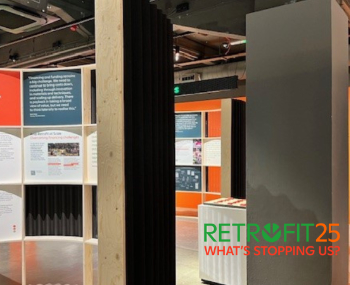Digital transformation - engineers need to keep pace
Contents |
[edit] Introduction
The challenges and opportunities associated with the digital transformation of the infrastructure sector are recognised globally.
An exponential increase in computing power over the past 50 years has transformed the infrastructure lifecycle. Professionals expect to be able to monitor and update information in real-time, through intuitive interfaces.
Rather than base-line project schedules being batch-processed on room-size computers, now smaller, cheaper devices and the use of digital information and analytics has become pervasive across the use, operation and delivery of infrastructure.
This brings both opportunities and challenges in managing innovation and interdependencies associated with this digital transformation.
[edit] Decisions for the whole life of assets
First, there is an opportunity to see projects as interventions in civil infrastructure systems. Owners and operators of infrastructure, for example in water and transport, are beginning to make investment decisions in relation to total costs rather than capital or operational expenditure.
Digital information enables them to make decisions that consider changes in patterns of use, maintenance and new build solutions, with alliancing approaches enabling the supply chain to be engaged in discussion of outcomes before the outputs of a project are defined. The Digital Built Britain agenda starts to consider this wider context of digital information.
[edit] Real time decision making
Second, there is a pressing need and opportunity for next generation tools and processes to provide information to infrastructure decision-makers at the time they need to make the decision.
As digital data sets get larger, running into millions of documents on the largest projects, it gets harder for engineers and managers involved in delivery to overview and understand aspects of the infrastructure design.
There are opportunities to automate existing approaches to identifying interdependencies in complex systems and to develop new collaborative visualisation approaches to enable engineers to have more informed conversations before making decisions.
[edit] Asset v technological lifecycles
Third, there is both the need and opportunity for continuous innovation. The ‘clockspeed’ of infrastructure delivery is substantially longer than the clockspeed of developments in digital technologies. This is a challenge in delivery.
A major infrastructure project such as Crossrail, for example, comes into service in 2018, but was being designed before the iPhone was available [see an artist's impression of Canary Wharf Crossrail station at the top of the article].
No longer can such delivery projects hold the digital technologies that they use stable for the duration of the project. They have to develop strategies for piloting new technology and continuing to innovate during delivery.
The innovation programme at Crossrail has been a success in this regard and is adopted for the next generation of major UK infrastructure projects.
Digital transformation is also a challenge for the through-life management of infrastructure. A new railway, such as Crossrail, may be in service for over 100 years and the digital technologies used to operate and maintain it are likely to continue to evolve over this timeframe.
Infrastructure owners and operators will need to develop strategies to store digital information and integrate and use different generations of sensor technology, robotics, continuous survey, visualisation and data analytic technologies.
[edit] The importance of continuous research
To compete in this transformed industry there is a need for a research base to support the industry in digital transformation – both immediately and towards the industry of the future.
Not least, investment in the UK Collaboratorium for Research on Infrastructure and Cities (UKCRIC) in addition to the existing work on innovation programmes where there is an opportunity for the further integration of digital strategy and innovation strategy.
This article was originally published here by ICE on 16 Mar 2017. It was written by Jennifer Whyte, Professor of Systems Integration, Imperial College London.
--The Institution of Civil Engineers
[edit] Related articles on Designing Buildings
- Adapting your technology to the new working normal.
- Articles by ICE on Designing Buildings Wiki.
- Crossrail 2.
- Data and infrastructure productivity.
- Digital Built Britain.
- Digital communications and infrastructure dependencies.
- Digital transformation - overcoming barriers.
- Digital transformation - what does it mean?
- How to gain a competitive edge with digital technologies.
- How to make the digital revolution a success.
- Infrastructure and cyber attacks.
- Infrastructure that allows humans to flourish.
- Intelligent building management systems IBMS.
- Project 13 and World Economic Forum partnership.
- State of the nation: Digital transformation.
- UK BIM Alliance and CIOB join forces.
- Vital infrastructure and redevelopment.
Featured articles and news
OpenUSD possibilities: Look before you leap
Being ready for the OpenUSD solutions set to transform architecture and design.
Global Asbestos Awareness Week 2025
Highlighting the continuing threat to trades persons.
Retrofit of Buildings, a CIOB Technical Publication
Now available in Arabic and Chinese aswell as English.
The context, schemes, standards, roles and relevance of the Building Safety Act.
Retrofit 25 – What's Stopping Us?
Exhibition Opens at The Building Centre.
Types of work to existing buildings
A simple circular economy wiki breakdown with further links.
A threat to the creativity that makes London special.
How can digital twins boost profitability within construction?
The smart construction dashboard, as-built data and site changes forming an accurate digital twin.
Unlocking surplus public defence land and more to speed up the delivery of housing.
The Planning and Infrastructure Bill
An outline of the bill with a mix of reactions on potential impacts from IHBC, CIEEM, CIC, ACE and EIC.
Farnborough College Unveils its Half-house for Sustainable Construction Training.
Spring Statement 2025 with reactions from industry
Confirming previously announced funding, and welfare changes amid adjusted growth forecast.
Scottish Government responds to Grenfell report
As fund for unsafe cladding assessments is launched.
CLC and BSR process map for HRB approvals
One of the initial outputs of their weekly BSR meetings.
Building Safety Levy technical consultation response
Details of the planned levy now due in 2026.
Great British Energy install solar on school and NHS sites
200 schools and 200 NHS sites to get solar systems, as first project of the newly formed government initiative.
600 million for 60,000 more skilled construction workers
Announced by Treasury ahead of the Spring Statement.

























